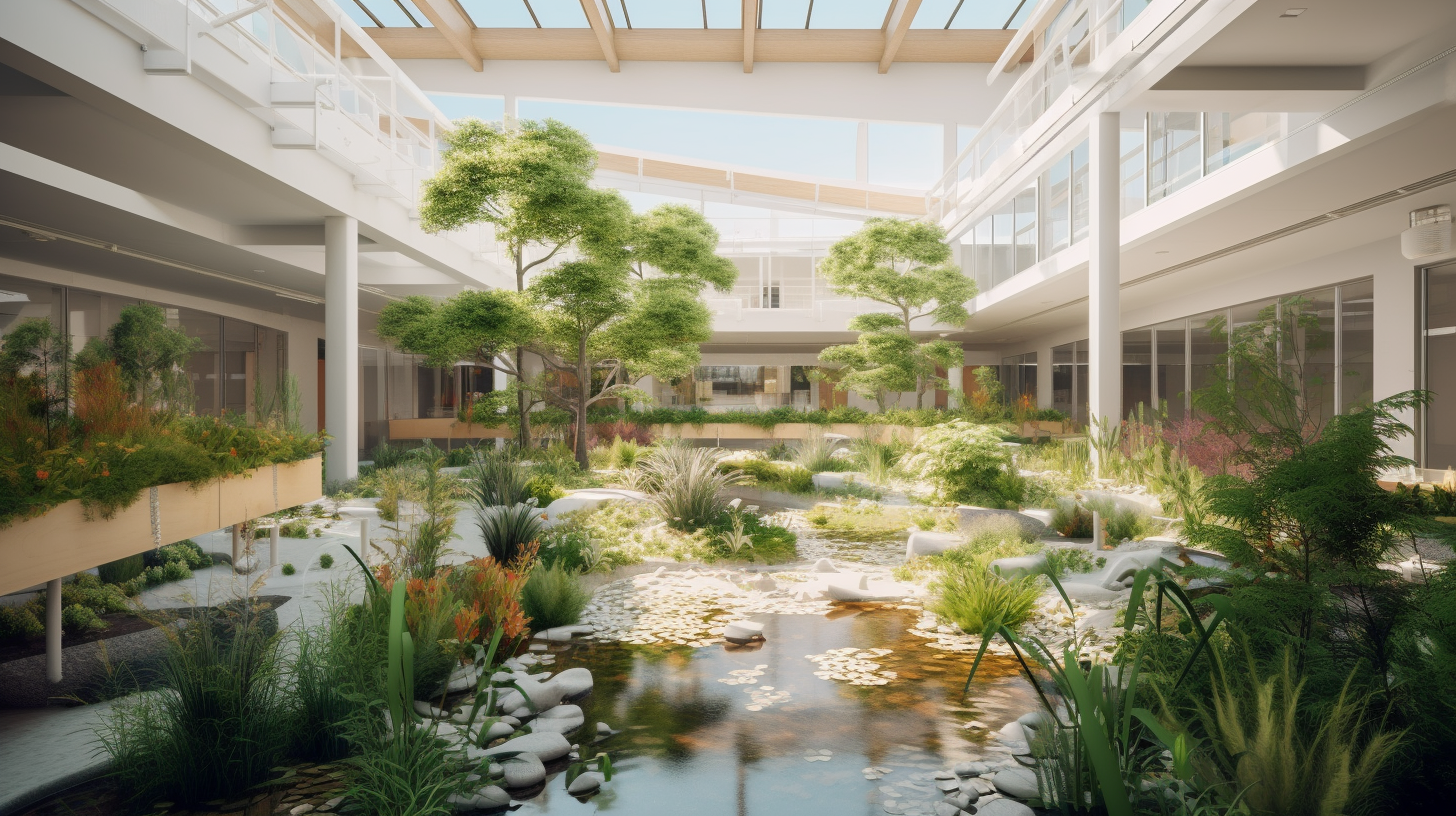As a hospital administrator, one of your top priorities is ensuring the safety and well-being of your patients and staff. This includes protecting them from the elements, such as rain and snow, which can cause significant damage to hospital roofs if not properly addressed.
Waterproofing solutions for hospital roofs are an essential investment that can help prevent leaks, mold growth, and other potential hazards that can compromise the health of those under your care.
There are various types of waterproofing solutions available, each with their own advantages and disadvantages. It’s important to choose a solution that not only meets the needs of your hospital but also fits within your budget.
By taking a proactive approach to waterproofing, you can prevent costly repairs and ensure the longevity of your roof, ultimately protecting the health of your patients and staff.
Importance of Waterproofing Hospital Roofs
You probably think that hospital roofs are just there to keep out the rain, but let me tell you, without proper waterproofing, those roofs could be putting the health of patients and staff at risk.
A leaky hospital roof can lead to mold growth, which can cause respiratory problems, allergic reactions, and other health issues. Moreover, water leaks can damage critical medical equipment, leading to costly repairs or replacements.
This is why it’s important to invest in cost-effective options for waterproofing hospital roofs that not only protect the building structure but also safeguard the health of everyone who enters it.
When considering waterproofing solutions for hospital roofs, it’s important to also consider their environmental impact. Some waterproofing materials can contain harmful chemicals that can seep into the ground or air, creating a negative impact on the environment.
However, there are eco-friendly options available that use sustainable materials and reduce waste. By choosing the right waterproofing solution, you can protect the hospital and its occupants while also minimizing the environmental impact.
Now let’s take a look at some of the types of waterproofing solutions that are available.
Types of Waterproofing Solutions
There’s no denying that different types of materials can be used to keep hospital rooftops safe and secure from the elements. Some of the most popular waterproofing solutions include bituminous membranes, liquid applied membranes, and single ply membranes.
Bituminous membranes are made of asphalt and can last for up to 20 years. They’re energy-efficient and can withstand extreme temperatures.
Liquid applied membranes are made of rubber or silicone and offer a seamless waterproofing solution. They’re easy to apply and can be used on any type of roof.
Single ply membranes are made of PVC or TPO and offer a durable and long-lasting solution. They’re cost-effective and can resist UV rays and chemicals.
When considering the different types of waterproofing solutions, it’s important to compare the cost and environmental impact of each option. Bituminous membranes are cost-effective but can have a negative impact on the environment due to the production of asphalt. Liquid applied membranes are more expensive but have a lower environmental impact as they’re made of rubber or silicone. Single ply membranes fall somewhere in between in terms of cost and environmental impact.
It’s important to weigh these factors and consider the specific needs of the hospital when choosing a waterproofing solution. With these considerations in mind, let’s explore the factors to consider when choosing a waterproofing solution.
Factors to Consider When Choosing a Waterproofing Solution
Choosing the right shield for your building is like selecting the perfect armor for a warrior in battle; it must be durable, reliable, and fit for the specific situation.
When it comes to waterproofing solutions for hospital roofs, there are several factors to consider to ensure the protection of the health of patients and staff. Here are three important considerations to keep in mind:
- Cost-effectiveness analysis: A waterproofing solution may seem expensive upfront, but it can save you money in the long run by preventing costly damages and repairs. Consider the cost-effectiveness of different options, including maintenance costs and the expected lifespan of the solution.
- Environmental impact assessment: As hospitals are expected to adhere to green standards, it’s important to consider the environmental impact of your waterproofing solution. Look for options that use eco-friendly materials and have low carbon footprints.
- Specific requirements: Hospital roofs have different requirements compared to other buildings. Consider factors such as the slope of the roof, the building’s location, and the expected foot traffic over the roof.
By carefully considering these factors, you can choose a waterproofing solution that meets the specific needs of your hospital. Once you’ve chosen the right solution, the next step is to ensure proper installation and maintenance to maximize its effectiveness.
Installation and Maintenance
To ensure your building’s shield remains effective, it’s crucial to properly install and regularly maintain it. When it comes to waterproofing solutions for hospital roofs, the installation process must be done with utmost care and precision.
It starts with choosing the right roofing materials that are specifically designed for hospital roofs. The materials should be compatible with the existing roof structure and must be installed in accordance with the manufacturer’s guidelines.
Cost analysis is also an important factor to consider when installing waterproofing solutions for hospital roofs. While it may seem like an added expense, investing in a high-quality waterproofing solution can actually save you money in the long run by preventing costly repairs and replacements.
Furthermore, the environmental impact and durability of the roofing materials must also be taken into account. It’s important to choose materials that are eco-friendly and can withstand the harsh weather conditions to ensure their longevity.
Regular maintenance should also be done to ensure that the waterproofing solution continues to provide effective protection for the hospital and its occupants.



